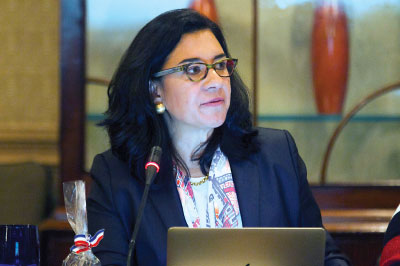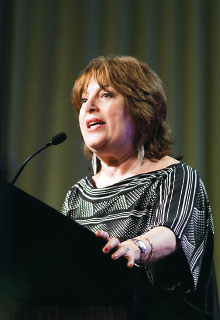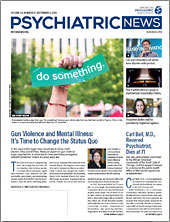When is physician “burnout” really major depressive disorder (MDD)? Might not some physicians—compelled by stigma surrounding mental illness—prefer to opt for a self-diagnosis of burnout when they really have a life-threatening depression?
And, conversely, can increased access to mental health services, however laudable that may be, really address the vast systemic causes of burnout?
Although “burnout” and MDD share overlapping symptoms, the distinction between the two—and the answers to those questions—is far from trivial, say three psychiatrists in an editorial in JAMA Psychiatry last month titled “A Key Differential Diagnosis for Physicians—Major Depression or Burnout?”
Physician burnout has become a nearly omnipresent buzzword and a leading topic of discussion among medical educators, administrators, and policymakers—driven by widespread anecdotal angst and unacceptably high rates of physician suicide. Yet “burnout” can be described differently in different contexts; there is some overlap with depression to be sure, but no clearly agreed-upon boundaries.
That’s a problem—one that can lead to “misdiagnosis” in both cases, wrote Maria Oquendo, M.D., Ph.D., and Carol Bernstein, M.D., both past presidents of APA, and Laurel Mayer, M.D., an associate professor of clinical psychiatry at Columbia University, in the editorial. Oquendo is also chair of the Department of Psychiatry at the University of Pennsylvania Perelman School of Medicine and a director on the National Board of the American Foundation for Suicide Prevention, and Bernstein is chair of APA’s Council on Communications and vice chair for faculty development and well-being in the departments of Psychiatry and Behavioral Sciences and Obstetrics and Gynecology at Montefiore Medical Center at the Albert Einstein College of Medicine.
“This current lack of diagnostic clarity has important ramifications,” they wrote. “The shifting definition of burnout, in concert with the overlap with psychiatric symptoms, sets the stage for a situation in which burnout can be invoked and a treatable diagnosis missed. As a result, a physician dutifully completing a burnout screening inventory for self-evaluation, as now recommended by the Accreditation Council for Graduate Medical Education, could easily conclude that she or he has burnout rather than MDD. Additionally, given the robust stigma around psychiatric conditions, the physician may be much more likely to conceptualize her or his problem as burnout rather than a psychiatric disorder.
“In this scenario, the physician might not seek effective pharmacologic or psychotherapeutic interventions for her or his MDD,” they continued, “but pursue commonly recommended stress reduction and relaxation strategies for burnout, such as yoga, mindfulness classes, or time off from work, or expect institutional change to alleviate his or her symptoms.”
In comments to Psychiatric News, Bernstein said she and her colleagues were moved to write the editorial because of what they observed as the frequent—and potentially dangerous—confounding of the two conditions. “People are talking about depression and burnout as if they are the same thing,” she said. “There is some overlap, but we fear that for some physicians it may well be easier to talk about burnout—which is less stigmatizing—than depression, which does still carry a stigma.”
Oquendo echoed those comments. “Depression is a very treatable illness and is the most common psychiatric disorder present when suicides occur,” she said. “Burnout is quite amorphous, and we don’t have a clear definition, nor do we know how to address it exactly. Stigma makes it easy to embrace burnout rather than consider the possible presence of depression. If depression is missed, it is not treated, leading to continuing suffering and possibly leaving suicide risk unaddressed.”
As physician burnout has garnered more and more attention, such as the research conducted by APA’s own Work Group on Psychiatrist Well-Being and Burnout (see box), a consensus has emerged that the symptoms of burnout—exhaustion, feelings of powerlessness and inefficacy, cynicism, depersonalization—are a response to pervasive features of the American health care system: excessive demand on physician time with inadequate resources for response and excessive administrative burdens (especially related to electronic health records) and technological tasks unrelated to patient care.
And just as surely as physicians who have MDD may not recover by resorting to the prescribed antidotes for burnout, so physicians who are burned out should not necessarily expect that treatments designed for a brain disorder are going to fix the American health care system. “You don’t want to be treating the system with antidepressants, and you don’t want to be treating people who are depressed by talking about their work situation,” Bernstein said.
“I am passionate about helping physicians on both fronts,” said Bernstein. “It’s interesting that in some institutions the response to the burnout crisis has been to enhance mental health services. That’s terrific, but in fact it doesn’t address the systemic problems that are the cause of physician burnout.”
Meanwhile, a life-threatening brain disorder—one that may be precipitated by stressors in the environment, such as a hostile or difficult work environment, but which necessitates psychiatric treatment—may be missed. In comments to Psychiatric News, Oquendo added, “Just as burnout is being destigmatized among physicians, we should do the same for depression and anxiety.”
The three psychiatrists concluded in the editorial: “Ultimately, the biggest challenge is rolling back the corrosive effects of stigma so that more affected physicians will feel comfortable acknowledging, at least to themselves and their personal physician, that what ails them is a treatable brain disorder and not simply an impossible work situation.” ■
“A Key Differential Diagnosis for Physicians—Major Depression or Burnout” is posted
here.


